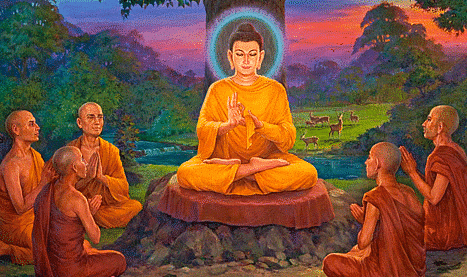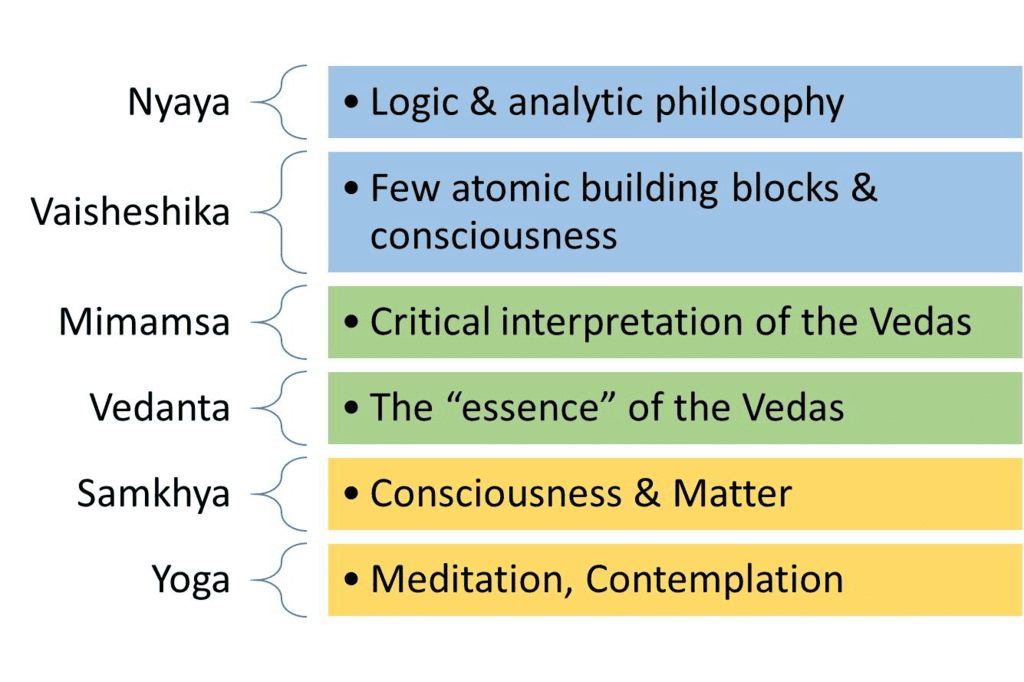New Questions & Ideas Summary Class 6 Social Science Chapter 6
The Story of the Buddha
Siddhartha Gautama: Siddhartha, later known as the Buddha, was born about 2500 years ago during a time of significant change. Kings were becoming more powerful, new cities were emerging, and life in villages was evolving. Many thinkers sought to understand these societal changes and the true meaning of life.
Early Life and Quest for Knowledge:
- Siddhartha belonged to the Sakya gana and was a kshatriya by birth.
- As a young man, he left his luxurious home in search of knowledge.
- He wandered for years, meeting other thinkers and engaging in discussions.
- He decided to find his own path to realization and meditated under a peepal tree at Bodh Gaya in Bihar, where he attained enlightenment and became known as the Buddha.

Teachings:
- Suffering and Desire: The Buddha taught that life is full of suffering due to cravings and desires that are often unfulfilled. Even when desires are met, satisfaction is temporary, leading to further cravings. He described this constant craving as "tanha" (thirst).
- Moderation: To overcome this craving, he advocated following moderation in all things.
- Karma: He believed that the results of our actions (karma), whether good or bad, affect us in this life and the next.
- Compassion: He encouraged kindness and respect for all life, including animals.
- Language: The Buddha taught in Prakrit, the language of ordinary people, to make his message accessible.
- Self-Reflection: He encouraged people to think for themselves rather than simply accepting his teachings.
The Story of Kisagotami:
- Kisagotami, mourning the death of her son, sought the Buddha’s help to revive him.
- The Buddha asked for mustard seeds from a household where no one had died.
- Kisagotami realized that death was universal and accepted that she could not escape it.
- The Buddha used this story to teach about the universality of suffering and the inevitability of death.
Upanishads and Philosophy
- At the same time, other thinkers explored philosophical questions and the nature of existence. They discussed concepts like the atman (individual soul) and brahman (universal soul).
- These ideas were recorded in the Upanishads, which contained dialogues between teachers and students.
Six Schools of Indian Philosophy:
- Six major systems of philosophy developed over time: Vaishesika, Nyaya, Samkhya, Yoga, Purva Mimansa, and Vedanta.
- These philosophies explored various aspects of truth and reality.

Panini, the Grammarian:
- Panini, a famous grammarian, developed a detailed grammar for Sanskrit using formulae similar to algebra. His work helped structure the language systematically.
Jainism
Vardhamana Mahavira: The 24th tirthankara, Vardhamana Mahavira, also lived around the same time as the Buddha. He was a prince who left his home to seek enlightenment and preached strict adherence to non-violence (ahimsa) and simplicity. Jainism emphasized leaving home, leading a simple life, and practicing non-violence and honesty.
Spread and Practice: Jainism attracted many followers, especially traders, and became widespread in India. Its teachings were preserved orally before being written down about 1500 years ago.
The Sangha
Monastic Life: Both the Buddha and Mahavira believed that true knowledge could be attained by leaving one's home and living a monastic life. They established the sangha (community of monks) with rules for their conduct. The sangha included various social classes, and its members lived simply, meditated, and traveled to teach and seek alms.
Differences from Earlier Sanghas: Unlike earlier sanghas, Buddhist and Jain monks were not just religious groups but also active in teaching and spreading their philosophies. They relied on support from laypeople for their needs.
Viharas and Buddhist Spread
Monasteries: Initially, monks stayed in temporary shelters during the rainy season, but later permanent monasteries called viharas were built. These included wooden structures and cave dwellings.
Expansion: Buddhism spread to various parts of India and beyond, including Southeast Asia. Mahayana Buddhism, which emerged later, featured statues of the Buddha and a focus on Bodhisattvas—enlightened beings who stayed to help others.
Pilgrims and Nalanda
Pilgrimages: Pilgrims like Fa Xian and Xuan Zang traveled to India to visit places associated with the Buddha and Buddhist monasteries.
Nalanda: Xuan Zang studied at Nalanda, a renowned Buddhist monastery, known for its rigorous standards and high-quality teachings. He praised the monastery's strict rules, talented teachers, and the intellectual environment.
|
297 videos|1066 docs|204 tests
|
FAQs on New Questions & Ideas Summary Class 6 Social Science Chapter 6
| 1. What are the key points to consider while summarizing an NCERT textbook? |  |
| 2. How can summarizing NCERT textbooks help in exam preparation? |  |
| 3. Is it necessary to include every detail while summarizing an NCERT textbook? |  |
| 4. How can one ensure accuracy while summarizing an NCERT textbook? |  |
| 5. What is the best approach to summarizing complex topics in an NCERT textbook? |  |

















